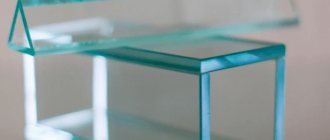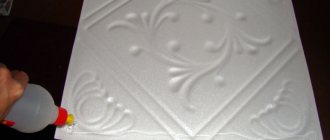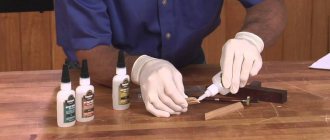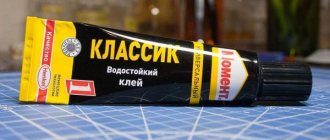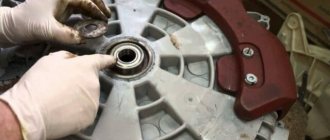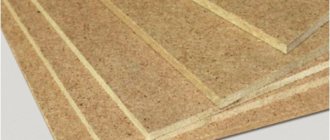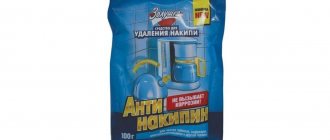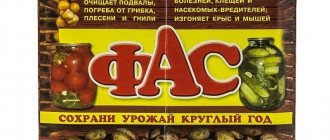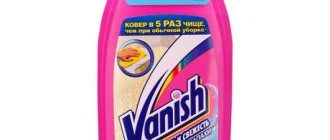There is no area of human activity in which it would be possible to do without the use of adhesive compositions of various types. Almost all man-made objects that surround us were necessarily treated with glue at some stage of their creation.
Glue VK 9
Organic and synthetic fastening materials, which are often used in everyday life, have been studied well by modern people. But questions still arise if there is a need to perform adhesive work on complex surfaces (glass, metal, ceramics, etc.).
Composition and quality
The kit includes two types of resins (epoxy, polyamide). The volume of containers depends on the manufacturer. The standard mixing ratio is 1:2.
Epoxy resin is a transparent mass with a yellowish tint and a soft consistency. The substance provides high adhesion to metals, resistance to chemical elements, water and heat resistance.
It is not worth using epoxy resin alone, as it does not provide a strong bond. The seam will be fragile and will not be able to withstand vibration processes.
To give the resin elasticity, a special hardener is added. The hardener is polyamide resin. It is characterized by increased elasticity, abrasion resistance, and waterproofing characteristics.
When combining resins, an adhesive with unique properties is obtained:
- high strength connection to almost all surfaces;
- resistance to chemicals;
- creating a complete seal of the seam;
- moisture and temperature resistance;
- The seam can withstand loads and vibrations.
Precautionary measures
During the polymerization process, VK-9 releases phenols and formaldehydes that are harmful to health. Even minor fumes can cause an allergic reaction in the form of itching, rash, and rhinitis in people with weakened immune systems. Glue that gets on the skin, if not removed, can cause a chemical burn, which takes a long time and is difficult to heal.
Splashes of epoxy that get into the eye cannot be removed on your own. You will need an urgent visit to an ophthalmologist. The manufacturer's instructions indicate that it is not recommended to work with resins for persons under 18 years of age.
To protect against fumes and skin contact with resins during mixing and operation, the following is required:
- Respirator. Type: anti-gas. Filter element: activated carbon, oxygen cartridge.
- Safety glasses.
- Workwear.
- Gloves.
This degree of protection is necessary when filling large areas, when harmful emissions can have a pathogenic effect on the liver, heart, and stomach. When doing minor work, latex gloves and goggles are sufficient.
Purpose
VK 9 has high adhesion characteristics. Connects metal, glass coatings, polymer, clay elements and other materials that are exposed to temperatures. The product is actively used in the radio engineering field.
Thanks to its viscosity, the mass does not spread and evenly fills the bonded surfaces. When creating certain structures, the fact that there is no shrinkage is taken into account.
It is better to use the mass at room temperature; in industry it is permissible to use it at a temperature of 60 degrees. The average consumption is 150 g per m2. The resins do not need to be heated before mixing; it is enough to mix while maintaining the correct proportions.
Required storage conditions
The finished glue must be applied no later than 2 hours. VK-9 components have a shelf life of up to 12 months. Epoxy resin requires special storage conditions, failure to comply with which will deteriorate its quality:
- use of factory packaging;
- protection from ultraviolet radiation;
- cooling and overheating.
Do not mix unused components during storage. If one composition has run out earlier, it is recommended not to use the second in the future.
Instructions for using VK 9 glue
According to the instructions for using VK 9, you must complete the following points:
- The surfaces to be glued are cleaned of dirt to give better adhesion; it is also recommended to clean them with sandpaper.
- Steel and metal surfaces are treated with petroleum solvents to prevent the formation of rust.
- Degreasing with alcohol and solvents.
- The resins are mixed in appropriate proportions; to speed up drying, more polyamide resin is added.
- The glue is applied to the two planes to be glued with a spatula or spray, depending on the type of surface.
- The elements are connected and fixed, placed under a press, yew for 24 hours.
To speed up the polymerization process, the product is heated to 60 degrees.
Epoxy resin
The appearance of epoxy resin may vary depending on the manufacturer:
- a transparent yellowish liquid whose consistency resembles honey;
- viscous dark brown resin.
The photo shows its views.
Properties of epoxy resin:
- high adhesion to metals;
- chemical resistance;
- strength and tightness;
- heat and water resistance.
However, epoxy resin in its pure form produces weak adhesive joints. They are fragile and do not withstand vibration well. It is to give the epoxy resin plasticity that a hardener is added to it. The hardener formula determines the basic properties of epoxy adhesive.
Safety precautions when working
When working, you must observe safety precautions:
- VK 9 glue is toxic, so it is not used when gluing food items.
- Work cannot be performed by persons under 18 years of age.
- The room in which repairs are being carried out must be well ventilated or have a working ventilation system.
- When working, IZ products are used, hands are soaked in cream.
- If the mixture gets on the skin, wash it immediately with running water and consult a doctor.
- Disposable containers are used to dilute the glue.
Characteristics
- Provides reliable grip.
- The viability of the mixture lasts 2.5 hours at t=+20 °C.
- VK-9 is a two-component adhesive, so the package contains two tubes with different resins.
- Before use, both types of resins are mixed.
After application, the glue sets within 2 hours, after 5-7 hours it can withstand a pressure of 10-12 atm, after 18-20 hours the figure increases to 150-160 atm.
The working qualities of the adhesive joint are maintained for a long time at t = -60...+125 °C, and at 200 °C the functionality of the joint is maintained for 500 hours, if the temperature rises to +250 °C, then the joint retains its properties for only 5 hours.
Areas of use
Do-it-yourself conductive glue for the keyboard
The glue of this brand can be used in almost all areas and is suitable for any materials from plastic to metal. Cosmofen can withstand both high and low temperatures, and withstands pressure changes and humidity, which only expands the scope of its use.
Plastic
For plastic products, adhesives are most often required, and due to its characteristics, Cosmofen can be used for various plastics, from kitchen utensils and decorative elements, to plastic windows and water pipes.
IMPORTANT:
Tree
Wooden products are glued together as quickly and efficiently as possible; most often the seam is invisible, but at the same time it is very strong and durable. Also, wood does not require any preparatory work, but it is worth correctly calculating the amount of glue used in order to avoid protruding residues, which are especially problematic to remove from shaped parts.
Metal
Cosmofen ca 12 is ideal for gluing metal parts due to the absence of solvents in its composition, which can negatively affect the structure of the material. This product series also includes two-component adhesives that provide strong bonding of metal to any other material.
Modeling
Gluing various models made of wood or thin metal is gaining increasing popularity. The glue for these purposes must have an instant grip and a convenient cap; Cosmofen ca 12 is in great demand for assembly enthusiasts. The hardening speed, depending on the part, ranges from 4 to 20 seconds.
Stretch ceiling
Installing ceilings of this type is not a complicated process, but the moment of their fixation is extremely important for long-term operation. Most well-known manufacturers of suspended ceilings recommend Cosmofen glue as a fixing composition, due to its versatility, quick setting, and joint strength.
INFORMATION:
What can and should be used?
Professional craftsmen have long used VK-9 glue to create a durable fastening seam. This is an adhesive composition based on two resins - epoxy and polyamide. Its unique properties are widely used in the construction of bridges, in the aviation and shipbuilding industries, for the manufacture of solar panels, etc. Such successful use in production made it possible to develop technology for gluing VK 9 at home.
Mixing
The VK-9 kit consists of two containers with two resins. Depending on the manufacturers, these may be different tubes of different capacities. The contents of the containers are mixed in the proportions needed to obtain a specific result. The standard proportion is 1:2.
What to scrub with?
Excess applied adhesive in places not intended for gluing should be removed using a special cleaner “Cosmo CL-300.150”.
Removal can also be done with the well-tested Dimexide product. A pharmaceutical product should be poured onto the glue-stained surface to help dissolve Cosmofen. You just need to wait a few minutes. Under the influence of Dimexide, the unnecessary glue will soften. Now it can be easily removed with a napkin or a piece of cotton wool. If you accidentally spilled a large amount of Cosmofen, then this soaking procedure must be repeated several times. “Dimexide” is an excellent product that will never spoil the outer surface of the processed materials or clothing. It will remove all glue completely without any residue.
In order to wash the adhesive off your hands, you need to dilute Dimexide with water.
Basic rules for storing glue:
- if the temperature regime is strictly observed (from +15°C to +25°C), then the composition will last up to six months; at low temperatures (about +6) it will not lose its quality characteristics for up to a year;
- it is necessary to exclude high humidity around;
- the adhesive composition does not like the presence of direct sunlight;
- glue that is in damaged original packaging is stored for no more than 5 months.
Adviсe
When working with universal compounds, you must strictly follow the instructions indicated on the manufacturer’s packaging:
- If glue is used to work with different surfaces, you should first clean them of dirt. It is best to degrease the wall or floor using acetone.
- If you urgently need to fix a leak in a hard-to-reach area, you can use a special adhesive in the form of an aerosol spray for this purpose. It is a kind of liquid plaster that is used to work with metal and plastic surfaces. Using glue is not difficult; all you need to do is apply the sealant to the damaged surface.
- When working with paper and cardboard, it is best to use safer options. The ideal solution for such materials would be a glue stick. Such products can be used even by children. They are non-toxic and easy to apply to paper surfaces.
The following video will tell you in detail about the production and use of various types of glue.
How to use medical glue
Medical glue bf-6 can be used by children. It is very convenient; after its application, a small, almost imperceptible film is formed, which tightens the wound, and over time, painlessly and independently dissolves.
Instructions for use
Medical glue bf-6 exclusively for external use. It is convenient to apply it with a cotton pad or ear stick. This should be done in this order:
- Use a cotton pad to stop the bleeding, clean the damaged area from dirt, and rinse with hydrogen peroxide or alcohol.
- Dry the injured area.
- Apply a thin, even layer of glue, covering not only the damaged area of skin, but also the skin around it (1–2 cm).
- If the film covering the wound is broken, apply a new layer of medical glue to the surface again.
Also, medical glue bf-6 is a good help in getting rid of acne. If you have tried many different remedies for this unpleasant problem, but nothing helps, apply glue to the pimple before bed. In the morning you will be stunned by the effect, the redness will go away, and the pimple will become much smaller. The drug is well suited for people who like to scratch and squeeze out pimples. The film covering the pimple will prevent it from becoming a large wound, which often leaves scars.
Application in dentistry
In the field of dentistry, medical glue bf-6 is very common. During surgery, dentists use it to treat inflammation near the roots of teeth (cyst, granuloma):
- The site of infection is carefully cleaned from the tooth root.
- Use sterile cotton wool to stop the bleeding.
- The treated root area is dried.
- Bf-6 glue is applied to the root of the tooth. This must be done carefully, not allowing the drug to get on the bone tissue.
- After two minutes, the treated area is thoroughly dried to prevent the formation of blood lumps.
The glue dries on the tooth in approximately 5 minutes and then remains in place for 7 days. After a while, the resulting film disappears on its own. If necessary, it can be removed from the damaged area earlier.
How to make conductive glue at home
There are several recipes for making conductive glue yourself.
Recipe 1: Second glue + simple pencil
- Take any cyanoacrylate glue (the so-called super glue) in a metal tube, add graphite powder to it in a ratio of 1 to 1 and stir until a homogeneous consistency is formed.
- For ease of use, you can prepare the glue directly in the tube.
- To do this, carefully unroll it from the end, add powder, stir with a match or toothpick and wrap it again.
- The required amount of graphite powder can be easily obtained by grinding the rod of the most ordinary pencil using a blade, a file or sandpaper.
Recipe 2: Battery + tsaponlak
For this recipe you need a regular salt pen-type battery, or rather not the battery itself, but a graphite rod from it.
- Graphite is crushed and mixed with tsaponlak in equal proportions.
- Tsaponlak is a transparent solution that is used in radio electronics to coat soldered electrical connections. You can buy it in a store for radio amateurs; a 30 ml glass bottle costs about 50 rubles.
- You can prepare the glue directly in the bottle, and you can store it in it for a long time.
Recipe 3: Epoxy + aluminum powder
Conductive adhesive can also be prepared using epoxy resin.
- The cheapest two-component adhesive of the domestically produced EPD brand is suitable for this (costs about 150-200 rubles per 280 grams).
- Aluminum powder is usually used as a conductive filler.
- The recipe is simple: the resin is mixed with aluminum powder until it becomes a thick cream. Immediately before gluing, the prepared composition is mixed with a hardener in a ratio of 10:1.
Recipe 4
- Powdered graphite and silver, vinyl chloride-vinyl acetate copolymer and acetone are thoroughly mixed in a porcelain mortar.
- You will need any regular nail polish.
- Next, you can fill the crumbs with varnish and mix, for example, with a match.
- The result is a black-gray liquid, similar in consistency to syrup.
- It should be stored in a glass container with a tight-fitting lid.
- The glue is stirred before each use.
- It dries on the product for about fifteen minutes.
VIDEO INSTRUCTION
All of the recipes listed above allow you to quickly and at minimal cost prepare glue at home, which is suitable for repairing heated threads in the rear window of a car and solving other problems.
Important point: The more conductive filler there is in the adhesive solution, the better the conductivity will be, but the strength of the connection will inevitably decrease.
Let's consider the use of conductive adhesive using the example of auto glass heating repair:
- wipe the rupture area with solvent;
- We glue tape on top and bottom of a thin thread;
- apply adhesive to the tear site;
- After the glue has completely dried, remove the tape.
Author of the article - Kristina Sekushina
Instructions for repairing rubber shoes at home
To seal rubber shoes at home, you must first prepare the surface of the product to be treated. The damaged area on the waders is wiped dry and, if possible, degreased with acetone. Directly gluing the shoes is carried out according to the following step-by-step instructions:
- The damaged area is compressed so that the porous surface of the material is on the outside. If this is not done, the shoes will not be able to be glued together properly.
- Apply a thin layer of solution to the surface, wait 5 minutes and repeat the procedure. Then the joint is connected by pressing it with force.
- Leave the shoes for a day, as this time is necessary for the EVA glue to dry completely.
When repairing rubber shoes, be sure to apply thin layers of glue. Excessive amount of solution will reduce the quality of setting of individual parts of the material.
In addition to the upper part of the shoe, the sole of rubber boots can be repaired using EVA glue. To restore the structure of the sole and eliminate any damage found, the area is processed on a specialized sharpening machine to ensure smoothness. Since using a patch in this situation is impractical due to the risk of rapid wear, it is preferable to use an adhesive solution. It is applied to the damaged area and silicone shoe sealant is applied on top. After waiting until the substances have completely dried, you can continue to use your rubber boots without fear of rapid wear and tear when in contact with water.
When treating the soles of rubber shoes with EVA glue, you need to take into account that the anti-slip properties of the solution are insufficient. To compensate for this drawback and ensure comfortable use of the shoes, it is recommended to seal only minor damage or restore only special ribbed soles, which are characterized by increased adhesion to the ground.
